When researchers from DTU Aqua travel to Disko Bay in Greenland this March, it is one trip out of many monitoring trips over the last three decades. And the results speak for themselves: The marine environment has changed markedly, and the basis of the food chain, the plankton, has been affected.
The weather in Qeqertarsuaq in Disko Bay on the west coast of Greenland is beautiful: –20 degrees, high sun and the bay covered with ice. The weather report comes from PhD student Delove Asiedu and Professor Torkel Gissel from DTU Aqua who have just landed in Qeqertarsuaq on Disko Island. They are staying for 21 days on a monitoring trip. Together with researchers from the University of Copenhagen, they will measure sea temperatures, salinity, nutrient salts and plankton in the water off Disko Island, as so many times before.
The results speak for themselves: The marine environment are changing with climate change. The sea ice cover will probably not be the same in the years to come when landing in March in Qeqertarsuaq. Professor Torkel Gissel has been researching Disko Bay's climate and plankton food chain for 30 years:
" Now, the ice cover is very limited and unpredictable with major consequences for the food chain in the sea and the hunters, who ultimately depend on a stable ice cover to get out on hunting and fishing from the ice,"
Professor Torkel Gissel.
“When we started working in Disko Bay, there was a 5-6 month stable winter sea ice cover on the bay. Now, the ice cover is very limited and unpredictable with major consequences for the food chain in the sea and the hunters, who ultimately depend on a stable ice cover to get out on hunting and fishing from the ice,” says Torkel Gissel.
In collaboration with the locals
The monitoring work takes place in close collaboration with KU, AAU and the Greenland Institute of Natural Resources and is carried out from KU's Arctic Station, which is located in Qeqertarsuaq, formerly Godhavn. About 850 people live here.
The local hunters are also involved in the researchers' monitoring work. When the research ship Porsild cannot get out, the hunters take samples through the ice or from their dinghies – citizen science is very valuable, says Torkel Gissel. Through this collaboration, the monitoring of the bay takes place systematically. Because even though the researchers from DTU Aqua are only on location a few times a year, temperatures and salt are measured 10-15 times a year. What is it that the researchers are particularly interested in?
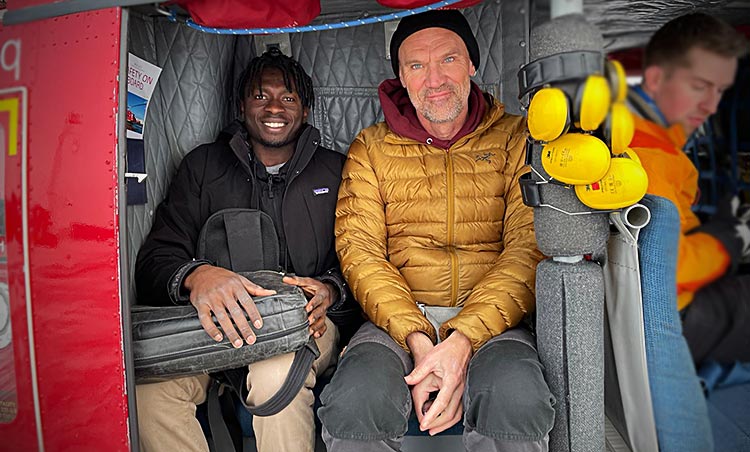
Photo: During the winter, trips to Disko take place by helicopter, fantastic landscape and a unique opportunity to see the area's large whales, says Torkel Gissel on his way with PhD student Delove Assiedu..
"The water has become warmer. But the main challenge is that the sea ice cover has become very short-lived and the ice thinner. This has consequences for what happens in the water, as the sunlight enters the water earlier – there is no ice that shadows, and the plankton growth starts earlier. What this ultimately means for the production of the food, i.e. copepods, important for fish and shellfish, is something we are interested in,” says Torkel Gissel.
The vulnerable ecosystem
In addition to sea temperatures and salinity, the biology and conditions of plankton in the ocean are being studied. In his PhD project, Delove Asiedu investigates how plankton reacts to toxins in the water. In addition to effects such as rising water levels and changes in salinity, the toxins that have so far been bound in the ice are released into the sea with the melting ice sheet.
In the glaciers and permafrost around Greenland, high concentrations of heavy metals, particularly mercury has been found in high concentrations. Research shows that mercury gas has been carried through the atmosphere for decades, mostly from Asia, to the Arctic Greenland, where it accumulates in the ice.Just as large, wild and cold Greenland can be, just as vulnerable is the ecosystem up north, because the food chain only comprises few links. Here, phytoplankton is the first and crucial link for further life in the food chain – it is the basis of life, as Delove Asiedu says:
“Phytoplankton is found all over the globe. It is food for zooplankton, which is food for fish. In the Arctic, plankton is doubly stressed by both mercury poisoning and rising sea temperatures,”says Delove Asiedu.
The researchers observe that the fat content of zooplankton community has dwindled over the years. And that is not good, because fat is the prerequisite for the Arctic animals to survive the long unproductive winter period.
Delove Asiedu says that research in this area is important, because there is a lack of knowledge about how the pollution with mercury from the melting ice affects the entire food chain – from fish, over marine mammals to humans.
The cocktail effect
The simultaneous effects of climate change and e.g. mercury pollution on ocean food chains is called the cocktail effect.
The DTU Aqua researchers' ongoing results from Disko Bay are reported in reports and scientific articles.
Photos: Torkel Gissel Nielsen
The photo at the top of the article: The Disko island seen from Illulisat
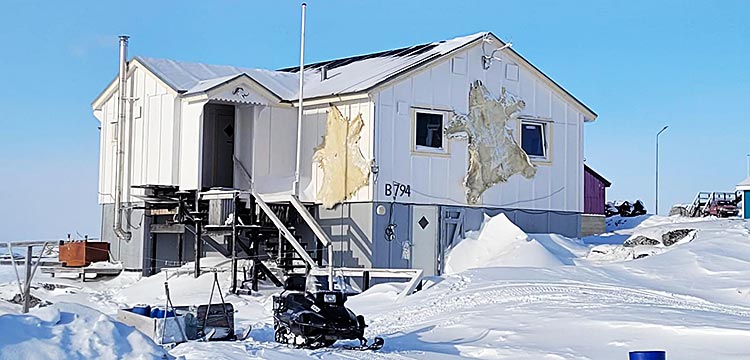
Many of the men in Qeqertarsuaq live as hunters. Here's one who has shot two polar bears. The hunting of polar bears is regulated in Greenland
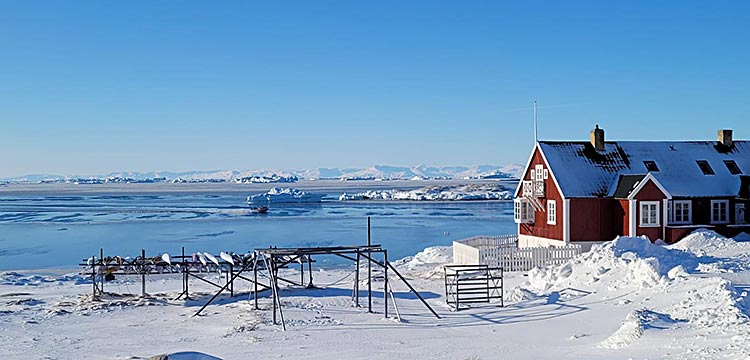
Disko Bay's characteristic giant icebergs, which are calved from Illulisat glaciers in large quantities.
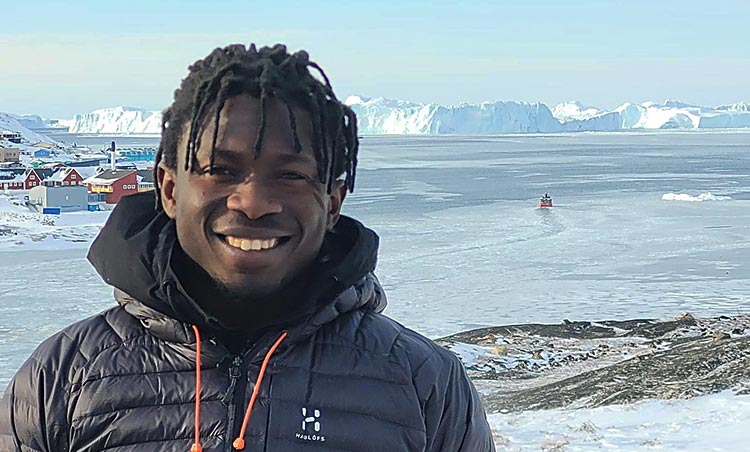
PhD student Delove Asiedu
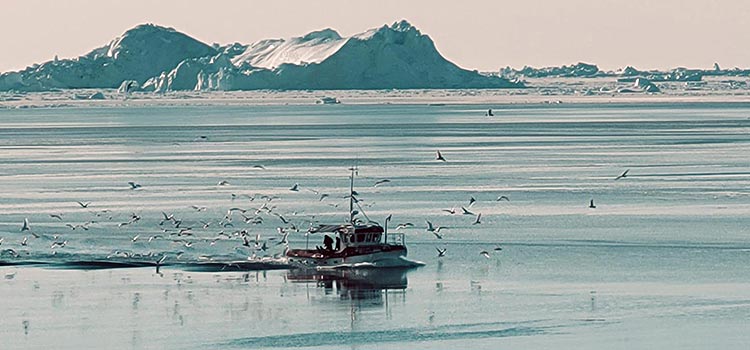
Fishing boat on the way home. There is a large fishery for halibut and shrimp in Disko Bay
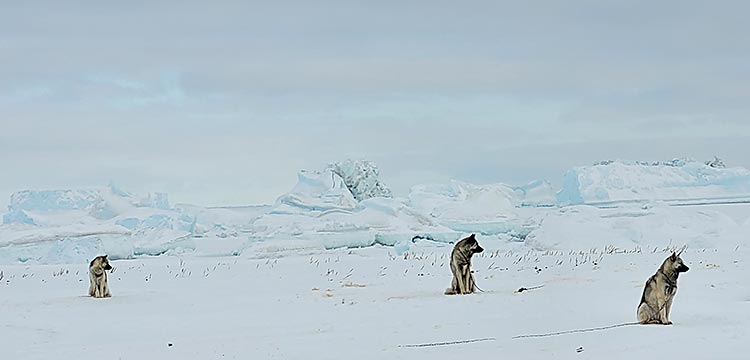
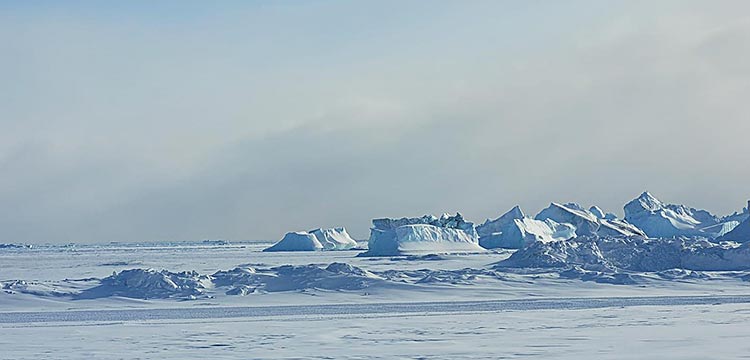
The view from the window of the Arctic Station Laboratory, probably the best office view in the world, says Torkel Gissel ;)